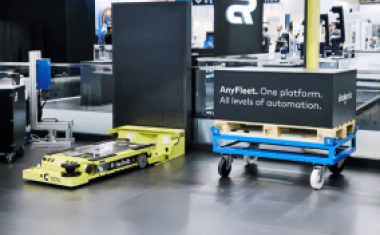Secure data communication using quantum cryptography and Li-Fi
Project partners led by Keequant are developing a new approach to secure optical data transmission in wireless networks using light and quantum keys.
Classical encryption approaches based on computational complexity may be replaced by novel quantum key distribution approaches in combination with post-quantum cryptography. This type of encryption cannot be cracked even with arbitrary time and computational power. Since existing cryptography is already threatened in the near future by the ever-increasing computational power of quantum computers, solution approaches must be developed in time to prevent an insecure transition period.

Previous research has focused on long-distance secure data communication for applications in the global data infrastructure, for networking government or military facilities, or for information exchange with satellites. However, the connections to the end user on the last kilometer have so far still been served by classical technologies and thus remain vulnerable to attack. To prevent this in the future, “QuINSiDa – Quantum-based Infrastructure Networks for Safety-critical Wireless Data Communication” was launched last September. The German project, funded by the BMBF with a sum of two million euros, has a planned duration to August 2025.
Linking Li-Fi technology and quantum cryptography
Li-Fi technology allows users to network with each other over short distances using optical signals. Compared to the familiar Wi-Fi technology, which is based on radio waves, the optical signals do not penetrate walls and can thus be designed for a defined area. Li-Fi technology thus allows full utilization of the available spectral data bandwidth in this area without interference from outside.
Independent of this, the novel technology of quantum cryptography is being advanced worldwide. In specific, this involves quantum key distribution (QKD), which makes it possible to distribute a cryptographic key whose security can be proven from an information-theoretic point of view. This contrasts with existing cryptographic techniques, whose security is based on computational complexity and is compromised by emerging quantum computers.
In quantum key distribution, quantum states in the form of light are prepared and exchanged between participants in the network when the keys are generated. When the quantum states are received, they are measured and post-processed to produce keys that are identical on both sides but secret to an attacker. The QuINSiDa project is the first to combine both technologies into a “QKD over Li-Fi” system. This makes it possible to carry QKD, which until now has typically been thought of more in a building-to-building scenario, all the way to the end user.
“The intention of the project is to demonstrate a quantum-based data communication network that wirelessly and flexibly connects multiple end users to a secure backbone infrastructure or which can be deployed separately as a secure campus network,” says Imran Khan, managing director of Keequant GmbH. The idea is to use a flexible wireless data communication network in a point-to-multipoint scenario to simultaneously secure the individual communication channels based on quantum keys.
In contrast to radio-based approaches, the use of an optical communication network offers the advantage that every participant who registers in the optical wireless communication channel (Li-Fi channel) is also visible to the quantum channel. This ensures that secure key exchange can occur. Different wavelengths of light are used to separate the Li-Fi channel and the quantum channel. This separation can be optimized by the receiver by using appropriate optical filtering against interference.
Other partners of QuINSiDa are the Fraunhofer Institutes IPMS and IOF, Telco Tech, Infosim, and Bescom Elektronik.











